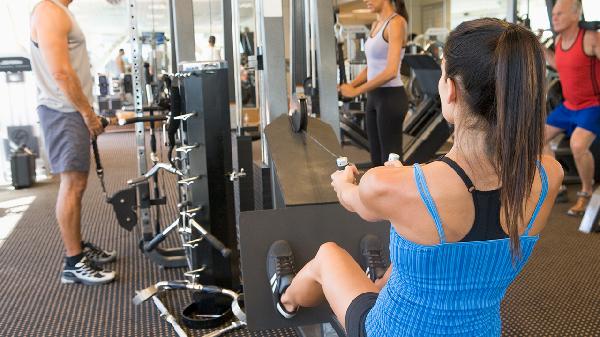You wouldn’t sprint out of bed and immediately try to deadlift your body weight, right? (If you would, we need to talk.) Skipping a warmup is basically the fitness equivalent of that—rushing into something intense without giving your body a heads-up. And let’s be real, your muscles and joints deserve better than that. A proper warmup isn’t just about going through the motions; it’s about priming your body to perform at its best while keeping injuries at bay. Think of it as the opening act before the main event—it sets the tone for what’s coming next.
Why Warmups Are Non-Negotiable
If you’ve ever rolled your eyes at the idea of warming up, you’re not alone. Plenty of people treat it like an optional pre-game ritual, something to skip if they’re short on time. But here’s the thing: warming up isn’t just about breaking a light sweat. It’s about preparing your body for the demands you’re about to place on it. When you warm up, you’re increasing blood flow to your muscles, loosening up stiff joints, and literally waking up your nervous system so it’s ready to fire on all cylinders. Without it, you’re essentially asking your body to go from zero to sixty in half a second—and that’s a recipe for strained muscles, limited mobility, and a higher chance of tweaking something mid-workout.
The Science Behind Warming Up
the slippery stuff that lubricates your joints—starts flowing more freely, reducing friction and making movements smoother. Even your brain gets in on the action, sharpening coordination and reaction time. Studies have shown that dynamic warmups (the kind that involve movement, not just static stretching) can improve performance in everything from sprinting to weightlifting. So yeah, it’s kind of a big deal.
Dynamic vs. Static: What’s the Difference?
Not all warmups are created equal. Static stretching—where you hold a stretch for 20-30 seconds—used to be the go-to, but research has shown it can actually decrease power output if done before explosive movements like sprinting or jumping. That’s where dynamic warmups come in. These involve controlled, movement-based exercises that mimic the motions you’ll be doing in your workout. They’re like a dress rehearsal for your muscles, helping them get used to the range of motion they’ll need once the real work begins. Kelsey Wells’s routine is a perfect example—each exercise is designed to prep your body for the demands of strength training, running, or resistance work.
Breaking Down Kelsey Wells’s Warmup Routine
Now, let’s dive into the actual moves. Each of these exercises is designed to target different parts of your body, ensuring no muscle group gets left behind. The best part? You don’t need any equipment—just a little space and a willingness to move.
Jumping Jacks (60 Seconds)
Old-school but effective, jumping jacks get your heart pumping while loosening up your shoulders and hips. Keep your core engaged and land softly to protect your joints.
Cat-Cow (60 Seconds)
This yoga staple is perfect for mobilizing your spine and relieving tension in your back. Move slowly and focus on the stretch as you alternate between arching and rounding your back.
Four-Point Thoracic Rotation (60 Seconds)
Great for improving rotational mobility—key for everything from swinging a golf club to nailing a clean and press. Keep your hips stable as you rotate your upper body.
High Plank to Downward Dog and Calf Pump (60 Seconds)
A combo move that stretches your hamstrings, shoulders, and calves while also engaging your core. Move with control and avoid rushing through the transitions.
Inchworm (60 Seconds)
This one’s a killer for hamstring flexibility and shoulder stability. Walk your hands out from a standing position, then inch your feet toward your hands (or as close as you can get).
Alternating Lunge (60 Seconds)
Lunges prep your legs for any lower-body work while also testing your balance. Keep your front knee aligned with your ankle and avoid letting it cave inward.
Plank (60 Seconds)
Finishing with a plank ensures your core is fully engaged before you start lifting or running. Focus on keeping your body in a straight line—no sagging hips!
How to Customize Your Warmup
While Kelsey’s routine is a solid all-around warmup, you can tweak it based on your workout. If you’re about to hit leg day, add in some extra hip openers like lateral lunges. For upper-body sessions, throw in some arm circles or band pull-aparts. The key is to mimic the movements you’ll be doing in your workout, just at a lower intensity. And if you’re short on time? Even five minutes of dynamic movement is better than nothing.
Common Warmup Mistakes to Avoid
Even with the best intentions, it’s easy to mess up your warmup. Here are a few pitfalls to steer clear of:
Skipping It Altogether
We’ve already covered why this is a bad idea, but it bears repeating. Even a quick warmup is better than none.
Overdoing Static Stretching
Save the deep stretches for after your workout. Pre-workout, you want movement, not long holds.
Rushing Through It
A warmup isn’t a race. Take your time with each movement to ensure proper form and full range of motion.
Ignoring Weak Spots
If you know you have tight hips or stiff shoulders, spend extra time mobilizing those areas. Your future self will thank you.
The Mental Benefits of Warming Up
It’s not just your body that benefits from a warmup—your brain does, too. Taking those few minutes to move mindfully can help you transition from "I just dragged myself to the gym" to "I’m ready to crush this workout." It’s a chance to check in with your body, assess how you’re feeling, and set an intention for your session. Plus, the rhythmic nature of dynamic warmups can be almost meditative, helping to clear your head before you dive into the heavy stuff.
When to Warm Up (and When to Cool Down)
Timing matters. Your warmup should happen right before your workout—not an hour before, not after your first set. And while we’re at it, don’t forget the cooldown. Post-workout, your muscles are warm and pliable, making it the perfect time for static stretching or foam rolling. This helps with recovery and can reduce next-day soreness. Think of it as bookending your workout—start strong, finish smart.
At the end of the day, warming up is one of the simplest ways to level up your fitness game. It doesn’t require fancy equipment or hours of extra time—just a little awareness and effort. So next time you’re tempted to skip it, remember: your body (and your workout results) will be way better off if you take those few minutes to prep properly. Now go forth and warm up like you mean it.
























